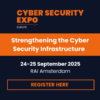

Partner content Cybersecurity leaders are fighting an invisible war, not just with threat actors but within their own organizations. It’s a conflict I’ve spent a lot of time reflecting on, especially as I think about why certain leaders within organizations make the decisions they do.
The war is between technology and human risk management (HRM). While security leaders push for robust, multi-layered defenses, executives often prioritize revenue, and technologists gravitate toward solutions they can control. They all seem to sideline the human factor.
Let’s unpack why leaders unwittingly sabotage their own security strategies in this way. We’ll look at the internal tensions between technologists, security chiefs, and executives tasked with balancing financial goals against cybersecurity investments. We’ll dig into how organizations sideline HRM. Then we’ll explore actionable ways these leaders can find that crucial balance to protect their businesses more effectively.
The tensions between technologists and risk managers
Technologists and HRM professionals are in a constant tug-of-war over cybersecurity decisions. Technologists are rooted in building and maintaining systems they understand and trust, while leaders focused on managing human risk aim to tackle vulnerabilities stemming from how employees act and behave.
The difference in focus is significant. Security leaders advocating for behavioral change and HRM strategies often struggle to gain traction with peers. It’s especially difficult when executive teams focus on profit and technologists favor tangible solutions like tools and systems.
Human risk management: The undervalued foundation of true security
As a managing director at a Fortune 500 company, I saw a repeated oversight from leadership teams including security heads and senior executives. They didn’t see HRM as a critical component of cybersecurity because it didn’t generate the multimillion-dollar sales they enjoyed from cutting-edge tech solutions. C-level executives favored investments they could pitch as innovative to customers, while technologists favored tools that reflected their expertise.
Here’s a fact that leaders ignore at their peril: Most data breaches stem from human error rather than technology failure. Opening phishing emails, reusing weak passwords across systems, falling for social engineering tactics, or simply misconfiguring systems cause most security failures. Despite this, executives still turn to the next big tool over the tough, culture-changing work of addressing human vulnerabilities.
The technologist’s bias and its ripple effect on security
IT and security professionals often prioritize what they’re familiar with and feel confident implementing. For example, purchasing advanced tools for threat detection or cloud security gives a sense of control.
This technology mindset prioritizes the tools rather than the outcome. Many technology leaders focus on acquiring those tools not because they’re the most effective solutions for the organization, but because they resonate with their expertise.
Technology won’t stop a sophisticated phishing attack if employees are unprepared. As a security leader, do you invest in the latest AI-driven platform or do you dedicate resources to securing organizational buy-in for HRM initiatives? The easy path will always be technology because cultural change is hard. But without prioritizing both, you’re leaving vulnerabilities unchecked.
Mission vs. technology: Are leaders getting it right?
Here’s a fundamental question to ask yourself as an executive or security leader: If your core mission is to protect the organization, are you treating HRM with the same urgency as deploying new tools?
A mission-driven leader understands that both strategies must co-exist, and focus on building a strong cybersecurity culture alongside their technological investments. If the mission isn’t driving decisions, however, the path of least resistance will dominate, and the organization risks creating a false sense of security. Leaders must challenge themselves to think critically about why they consistently default to technology when the human factor is just as critical to success.
The role of consultants in shaping leadership decisions
The consulting firms that work with security leaders often help steer decisions away from HRM. They often push high-margin tech solutions over less glamorous but more useful human risk management practices. This perpetuates a technological bias.
Security chiefs must push consulting partners to broader their view of cybersecurity. Has your consultant created a road map for addressing human risk and cultural alignment, or are they overly focused on technology?
Simplifying integration for security chiefs and executives
Bridging the divide between HRM and technology can feel overwhelming for busy leadership teams, but it doesn’t need to be. NIST’s Cybersecurity Framework and ISO 27001 guide leaders on integrating human and technological controls. They highlight actionable pathways to weave HRM into existing cybersecurity initiatives.
Security and technology leaders can also look to HRM platforms to tackle cybersecurity challenges head-on. These platforms complement security awareness training and simulated phishing campaigns to scale employee engagement, measure progress, and create a culture where everyone plays a part in staying secure.
Industry-specific guides or playbooks can give executives a clear path from long-term training strategies to cultural alignment initiatives. Security leaders can use them to cut through complexity and implement meaningful change one step at a time.
The invisible war between technology and HRM is one that security leaders often overlook. It’s easier to favor solutions that are tangible, marketable, or quick to deploy. But true organizational security demands a focus on what’s less visible yet often more critical: people. The challenge is finding leaders with the courage to demand balance, even when faced with competing priorities.
For technologists, executives, and security professionals alike, the takeaway is simple. Protecting an organization isn’t just about deploying the latest tools; it’s about protecting the people who work there.
Contributed by OutThink.




